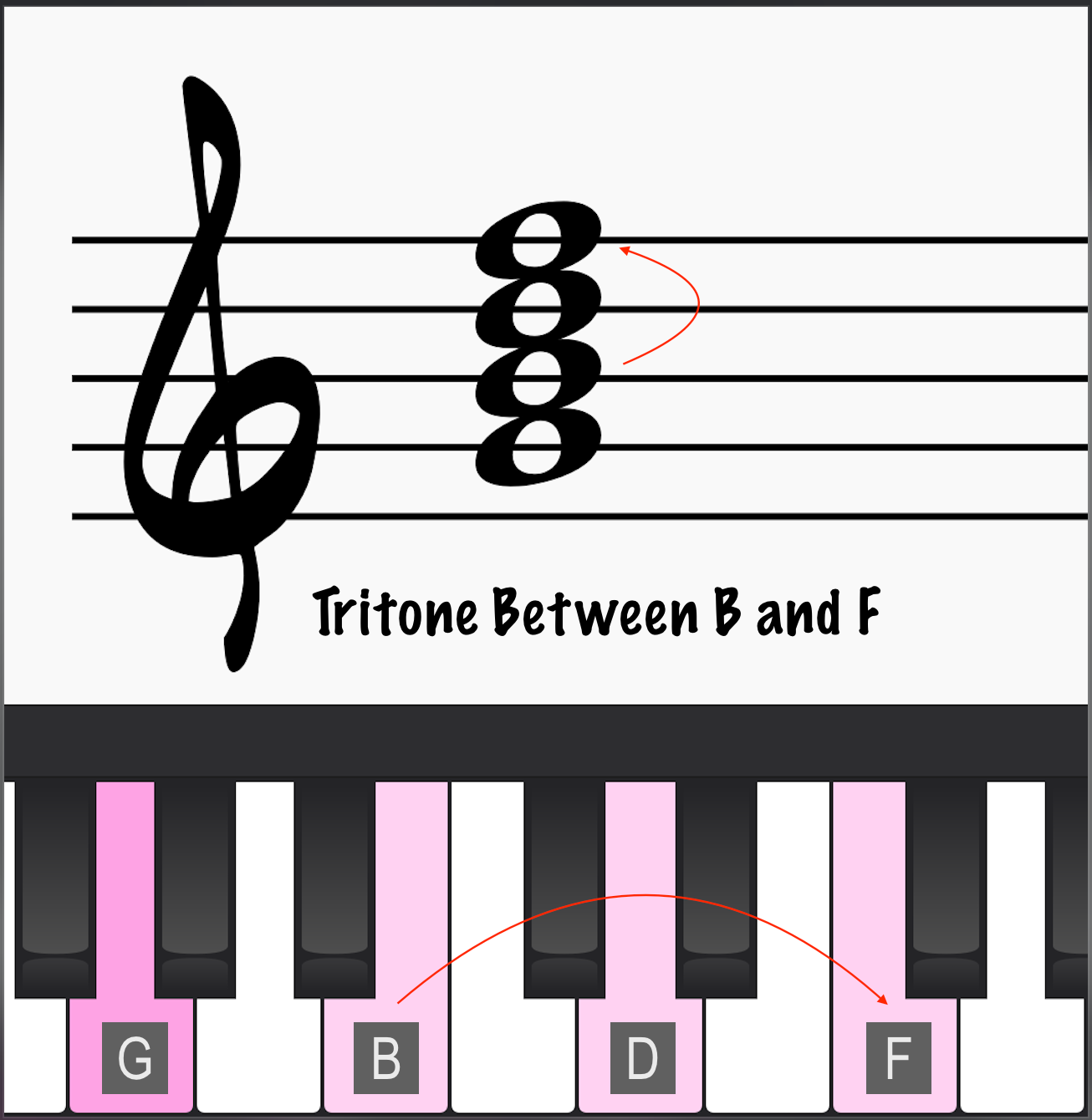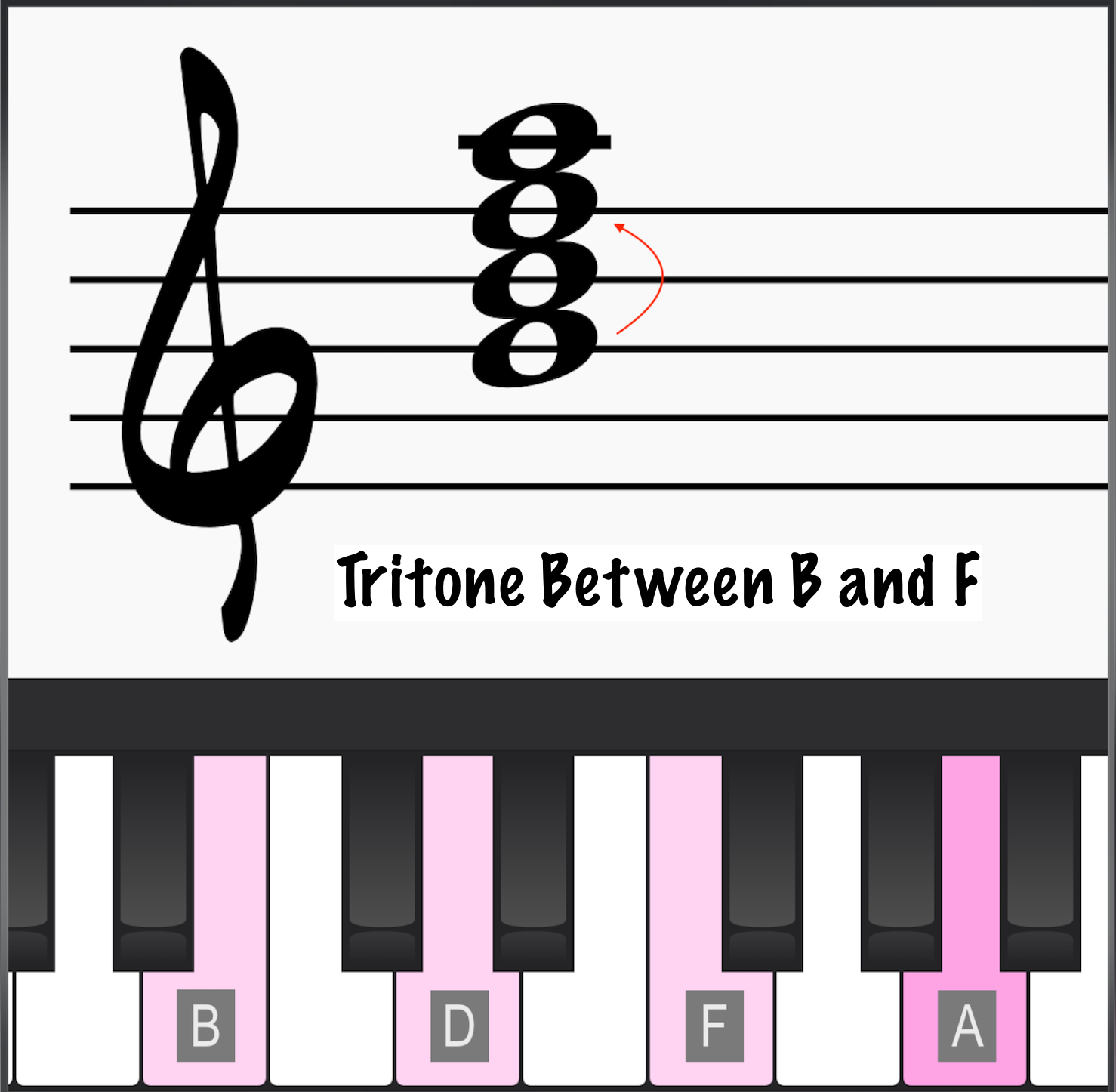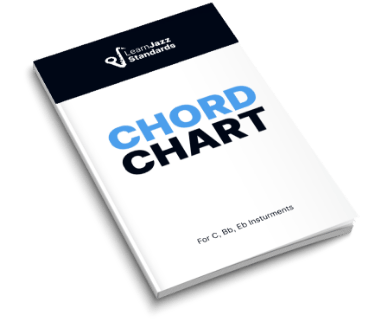Music intervals are the building blocks of melody, harmony, and musical structure. Everything you’ll learn as a Western-trained musician will be tethered to the concept of musical intervals.
Whether you are learning chords, scales, arpeggios, or chord progressions, you’ll need to understand intervals first!
In this article, we’ll go over everything you’ll need to know to fully understand musical intervals, how to construct them, and how they inform everything from triads and seventh chords to scales and arpeggios.
We’ll cover—
- What sound actually is
- The twelve intervals in an octave and how to identify them
- How to categorize interval qualities (major intervals, minor intervals, perfect intervals, and more)
- The difference between a consonant interval and a dissonant interval
- How music intervals are used to construct chords and scales
If you haven’t given harmonic intervals their due time, don’t skip them now! Understanding musical intervals will make learning about chords, scales, and chord progressions much easier.
And, if you are looking for one place to get serious about learning music theory and vastly improve your musicianship, look no further than the Learn Jazz Standards Inner Circle.
The Inner Circle is a community of musicians passionate about improving their musical abilities and comprehension. We have everything you need to help you break through practice plateaus and make the most of your time in the practice room.
Ready to take your playing to the next level? See what the Inner Circle has to offer.
Table of Contents
Music Theory Basics
Understanding intervals can seem daunting for beginners trying to learn music theory. However, if you take it step by step, starting with the basics, other aspects of music theory will make much more sense.
Let’s first explore what sound actually is and then get into what intervals are.
Defining Sound
Let’s begin with a fundamental concept. What is sound? Well, sound is a phenomenon created by the human brain. The process is equal parts biology and physics, but here is a very rough overview of the process.
When an object vibrates in a medium, it creates a mechanical pressure wave that travels from the source outward. The frequency of the vibration helps determine the qualities of the pressure wave, which has a few characteristics important to music:
- Frequency is the speed of the vibration or oscillation. The more rapidly an object vibrates, the higher the sound wave frequency becomes, which we interpret as a higher pitch. Less rapid vibrations create lower frequencies, which we interpret as lower pitch. Frequency is measured in Hertz (Hz).
- Amplitude is the height of the pressure wave’s waveform. Higher waveforms are interpreted as louder, and lower waveforms are interpreted as quieter.
- Duration is the amount of time a vibration lasts. In music, this is associated with rhythm.
Though amplitude and duration are important in their own right, when it comes to music intervals, we are more concerned with the frequency of a sound wave.
So we have a vibrating object and a medium through which our pressure wave can travel, but we are missing something…
…Add The Ears
Now we need to add another participant into the mix—your ears! Something needs to receive the pressure wave to interpret the pitch or frequency of the sound.
Let’s say the object is a piano string, and the medium is air. Your eardrums are the receivers that take the mechanical pressure wave and convert its data into electrical signals that your brain can decipher and organize.
How your brain actually sorts and distinguishes between different sound sources and the multiple frequencies found in single sound waves is a much more complicated and interesting story. Still, for our purposes, this explanation suffices!
In summary, what we experience as a note or a pitch is actually a mechanical pressure wave with a specific frequency that our brains organize by giving it a particular pitch.
For more on the physics of sound waves, check out this excellent resource on the physics of sound.
Defining Intervals
So, what exactly is an interval?
In music, an interval is the distance between two pitches. Let’s take a C on the piano and find the next C up:

Regarding frequency, the second C is roughly double the frequency of the first C. Our brains experience the second C as related to or connected to the previous C.
Our naming system shows their relation by giving these Cs numbers. C4 and C5, for example.
- C4 is around 261.626 Hz
- C5 is around 523.251 Hz
However, the physical relationship between these two notes is that the frequency of the second C is double. Every interval within this octave will be less than double the frequency of the first C.
It may seem technical to stress this fact so much, but this is the underlying structure beneath music theory.
Musicians divide octaves into distinct pitches (think frequencies). You can break an octave into smaller pieces, but we don’t stress microtones when discussing basic music theory. When added together, these eleven pitches will take you to the next octave (bringing you to a total of twelve).
These eleven divisions of the octave are the musical intervals we are about to discuss—the basic building blocks of Western music! Note that these are called simple intervals or intervals within the octave. There are also compound intervals, which are intervals beyond the octave.
- Unison (C to C)
- Minor Second (C to Db)
- Major Second (C to D)
- Minor Third (C to Eb)
- Major Third (C to E)
- Perfect Fourth (C to F)
- Tritone (C to F#/Gb)
- Perfect Fifth (G to G)
- Minor Sixth (C to Ab)
- Major Sixth (C to A)
- Minor Seventh (C to Bb)
- Major Seventh (C to B)
The Difference Between Harmonic Intervals and Melodic Intervals
Harmonic and melodic intervals are referenced at different points in this article. The difference is subtle but important.
- A harmonic interval is two pitches played simultaneously, creating one “sound.” These are the intervals found within chords.
- A melodic interval is two pitches played consecutively, one after another. These intervals are found within scales and melodies.
Musical Interval Qualities
We’re about to examine these simple interval qualities in greater detail, but I want to introduce some concepts before we proceed. When discussing these music intervals, I’ll also discuss each interval’s relative consonance or dissonance and whether each is a minor, major, or perfect interval.
Consonance vs. Dissonance
Consonance and dissonance refer to an interval’s apparent stability. A consonant interval sounds balanced and resolved. It sounds stable like it doesn’t need to move. The most stable music intervals are perfect unison and perfect octave.
- Unison (C to C)
- Octave (C to next highest C)
Perfect unison makes sense because the waveforms for the two pitches are identical. A perfect octave is also a consonant interval because its waveform is half the size of the lower note, meaning there isn’t any “rub.”
“Rub” is a colloquial jazz term used to describe dissonance.
There are other perfect intervals that sound very stable and, though they are less consonant than unison or an octave, are still considered consonant intervals.
These music intervals are the perfect fourth and the perfect fifth.
- Perfect fourth (C to F)
- Perfect fifth (C to G)
The remaining music interval qualities grow less consonant and more dissonant. Dissonant intervals are characteristically unstable sounding. The more dissonant an interval is, the greater the tension.
The most dissonant interval is minor second interval. This music interval is made of two adjacent notes, meaning each note’s waveform is relatively close in size to the other but just different enough that you can really hear (and often feel) the “rub” as they interact.
- Minor second (C to Db)
Consonance and dissonance are considered on a spectrum. Here are all the simple music intervals listed from most consonant to most dissonant:
- Perfect Unison (P1)
- Perfect Fifth (P5)
- Perfect Fourth (P4)
- Major Third (M3)
- Minor Third (m3)
- Major Sixth (M6)
- Minor Sixth (m6)
- Major Second (M2)
- Minor Seventh (m7)
- Major Seventh (M7)
- Minor Second (m2)
- Tritone (A4/d5)
Major and Minor Intervals
You’ll also see major intervals and minor intervals. Major or minor refers to the size of the interval. A major third is one half step larger than a minor third. A minor seventh is one half step smaller than a major seventh.
Major intervals
- Major Second
- Major Third
- Major Sixth
- Major Seventh
Minor intervals
- Minor Second
- Minor Third
- Minor Sixth
- Minor Seventh
Perfect intervals and Imperfect Intervals
Musicians also categorize music intervals as imperfect or perfect.
Perfect intervals:
- Unison
- Fourths
- Fifths
- Octaves
Imperfect intervals:
- Seconds
- Thirds
- Sixes
- Sevenths
Now, let’s check each interval out!
Unison: C to C
Unison is the name for two identical pitches. There is no distance between two notes in unison. This is the most consonant interval and is considered a perfect interval.
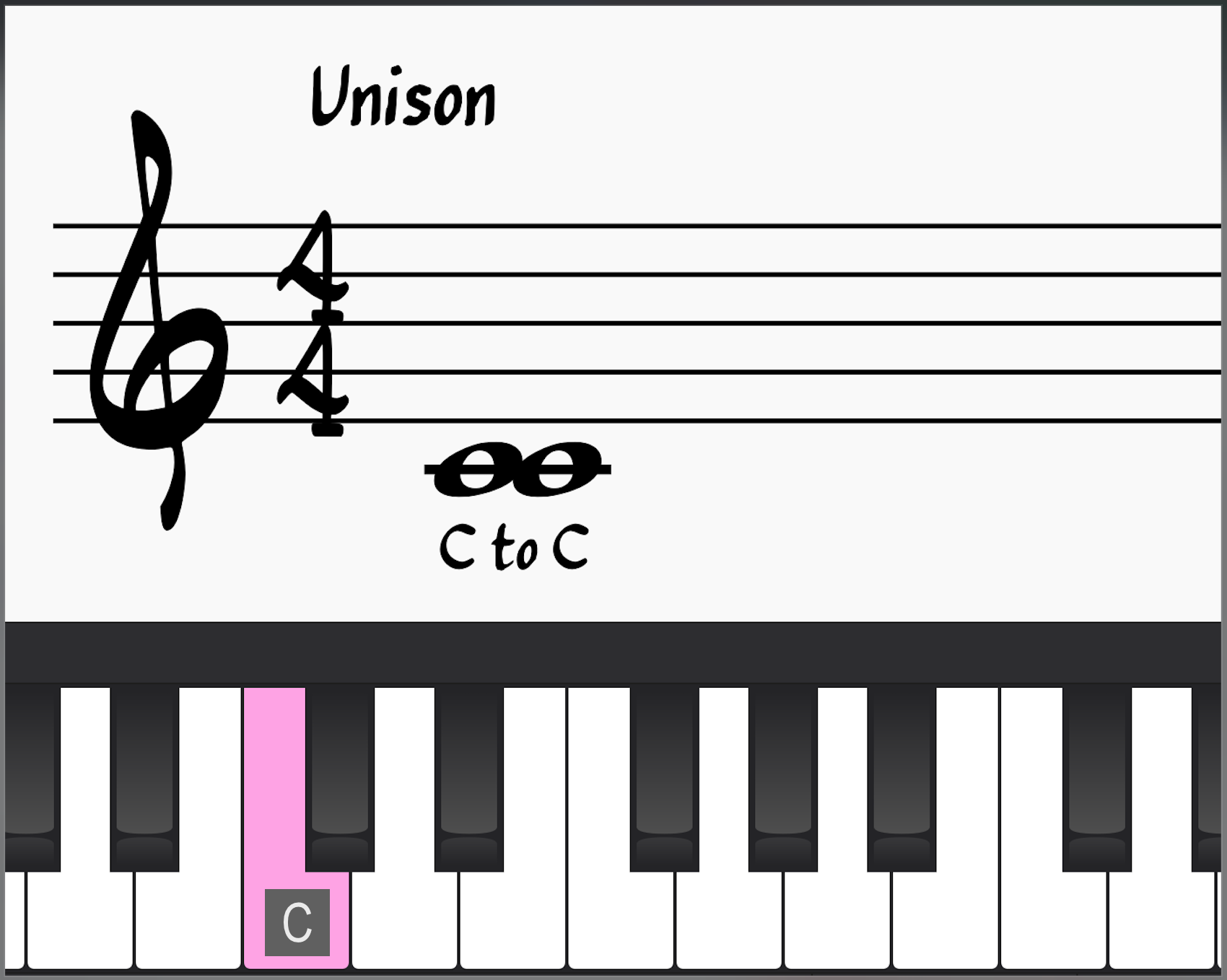
Minor Second (m2): C to Db
A minor second interval is the distance between two adjacent keys on a piano keyboard. This imperfect interval is an example of perfect dissonance. Minor seconds are very harsh sounding and tense. They are a great tool for building up tension before a cadence or release.
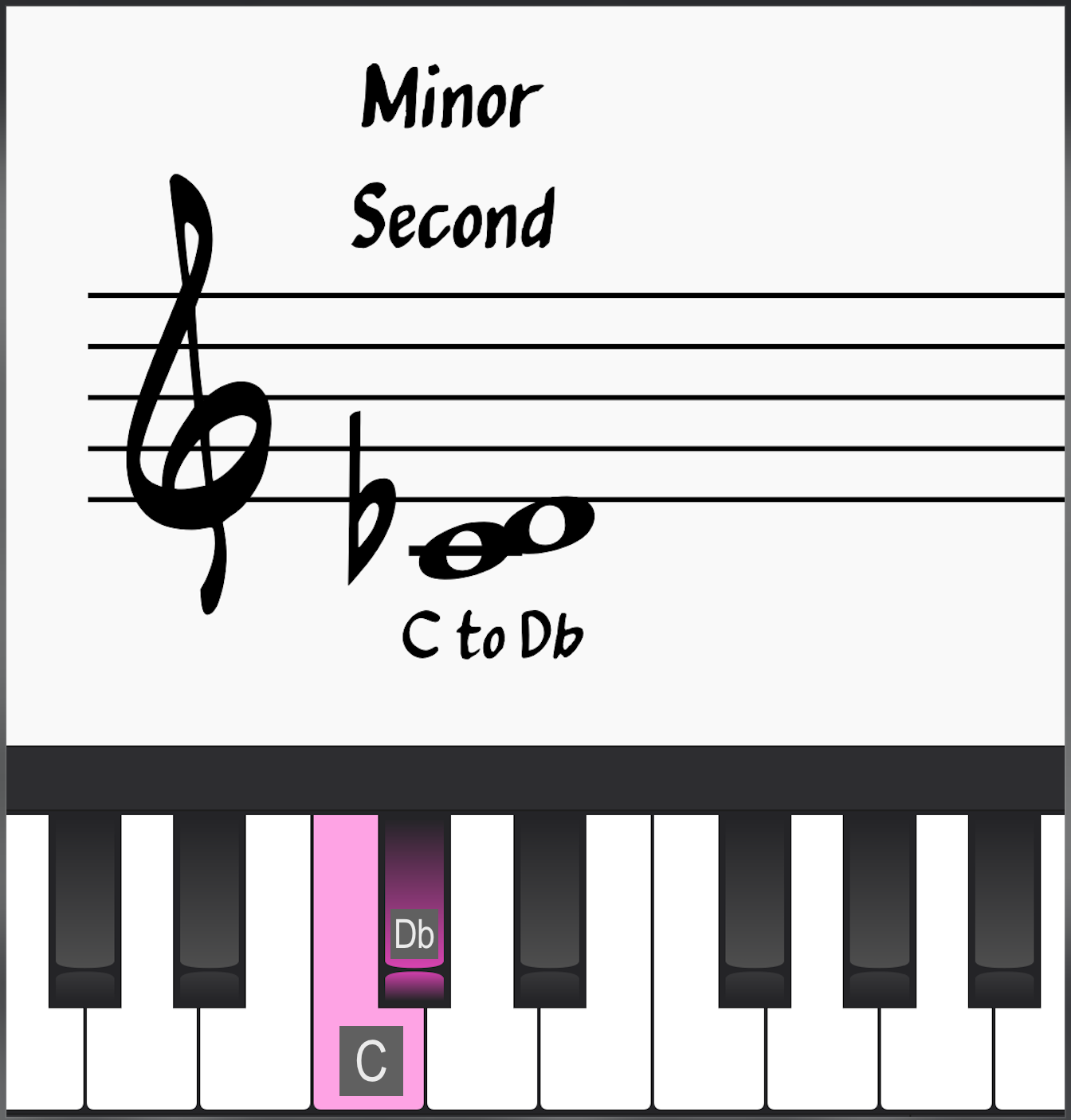
Major Second (M2): C to D
A major second interval is represented by a whole step on a piano keyboard. It consists of two half steps. Though less dissonant than a minor second, it is still quite dissonant. This interval is considered one of the imperfect intervals.
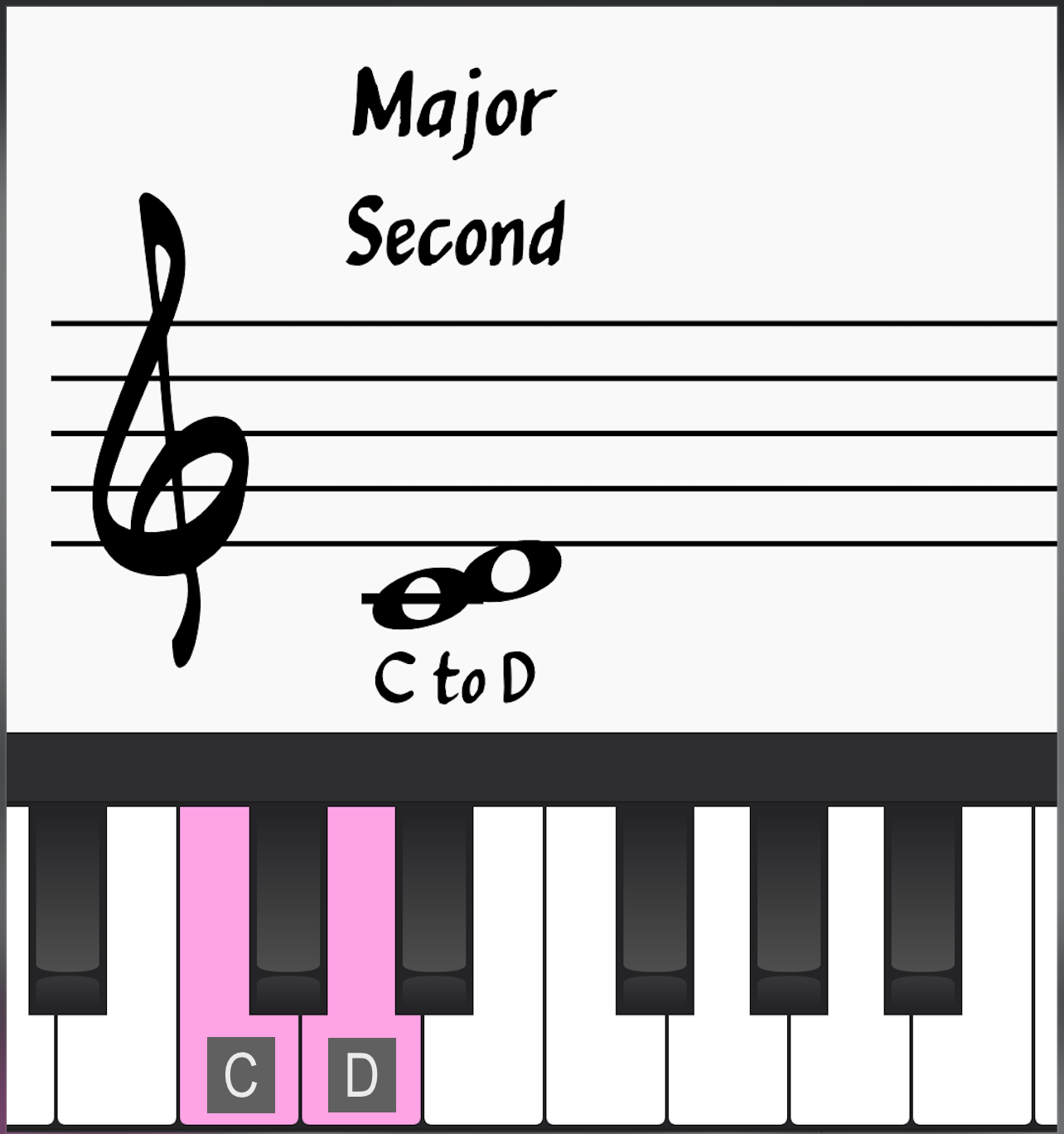
Minor Third (m3): C to Eb
Minor thirds are equivalent to three half steps and are one of the imperfect intervals. Major and minor thirds are very important in determining the major or minor tonality of chords. The third is one of the essential components of triads and seventh chords.
Minor thirds are slightly more dissonant than major thirds.
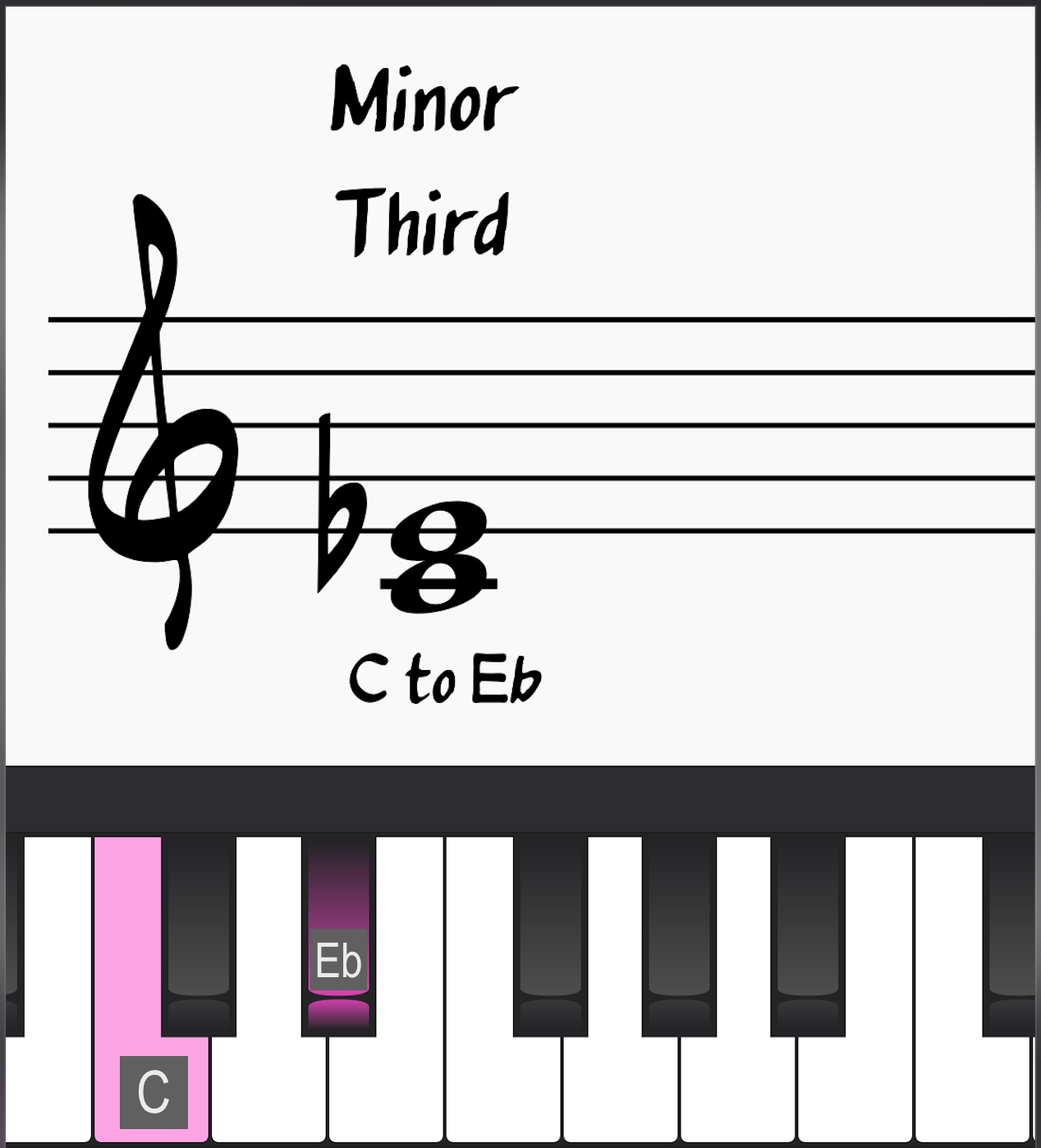
Major Third (M3): C to E
Major thirds are built from four half steps. Major thirds are more consonant than minor thirds and are one of the imperfect interval qualities. Like the minor third, this interval is one of the essential components of triads and seventh chords.
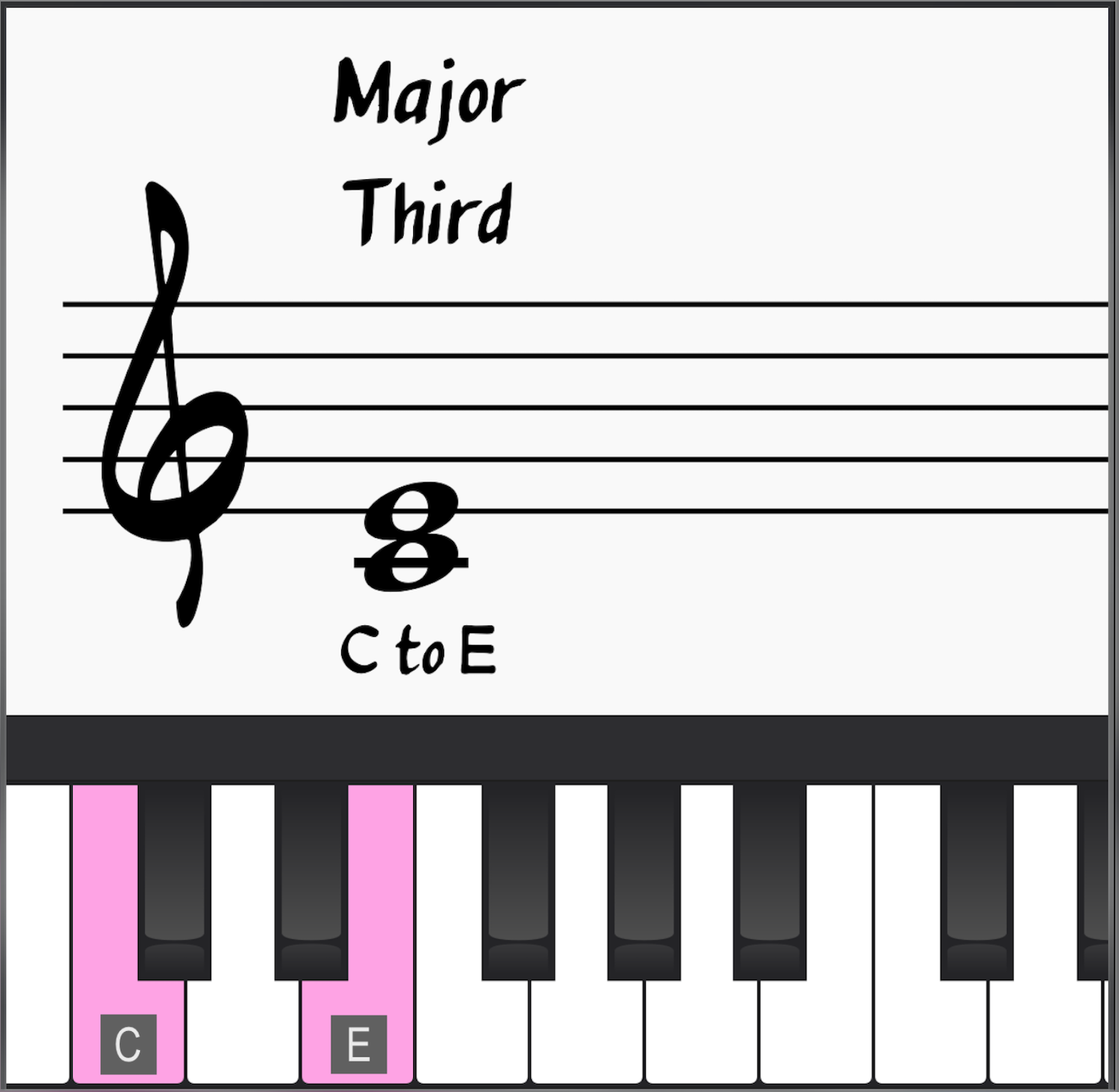
Perfect Fourth (P4): C to F
A perfect fourth is made of five half steps and is one of the perfect intervals.
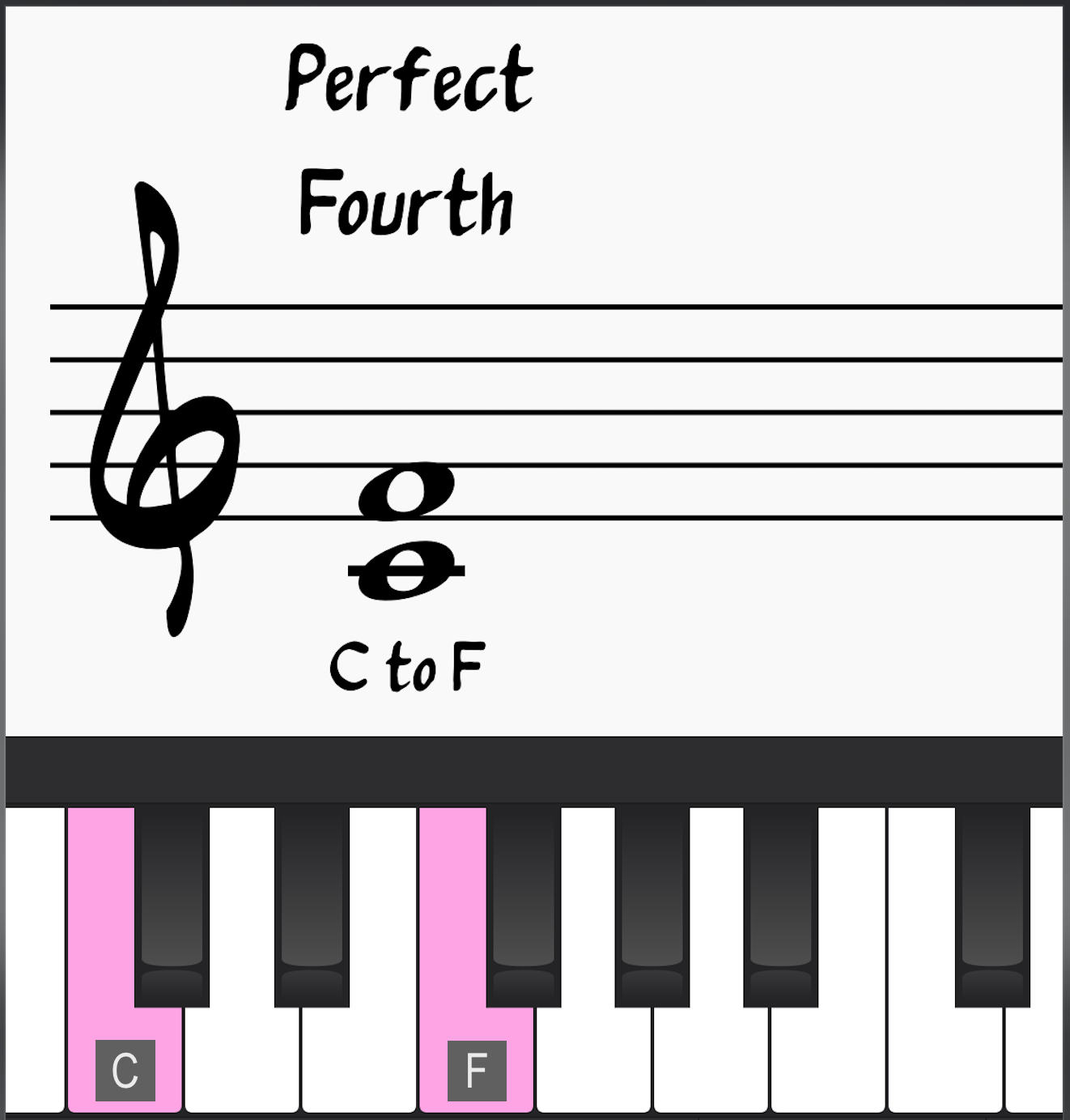
Augmented Fourth/Diminished Fifth (A4/d5): C to F#/Gb
Also known as the tritone, spanning six half steps. A tritone cuts the octave precisely in half. You might guess it would be quite stable based on this idea alone. However, this interval is considered dissonant.
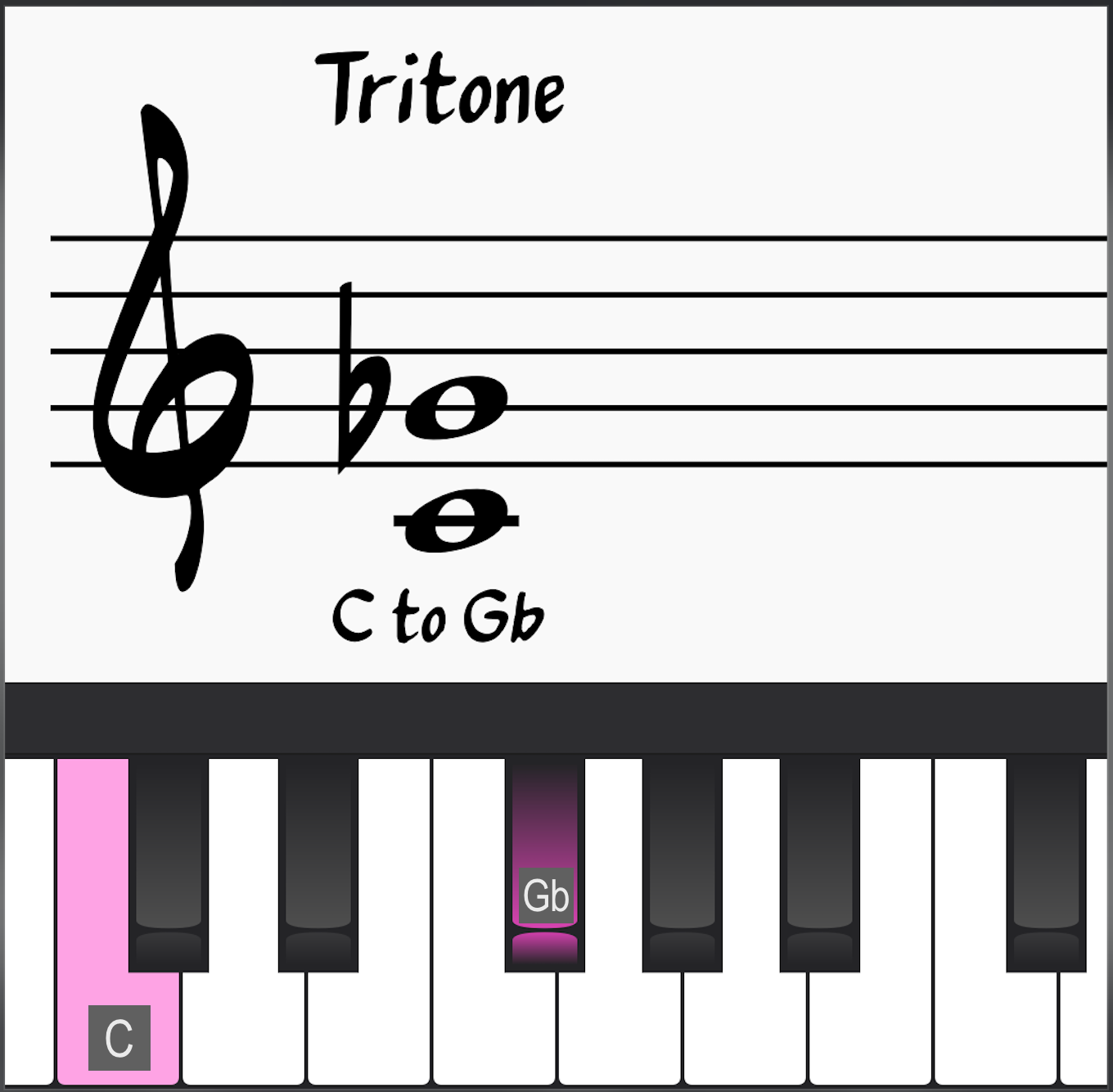
As a diminished fifth, the tritone is an important interval in the diatonic scale and diatonic harmony. The tritone appears in two crucial diatonic chords:
- The V7 chord: In the key of C, there is a tritone in the V chord (G7) between the 3rd (B) and the 7th (F). This interval is responsible for dominant chords and the resolution from V to I in diatonic harmony.
- The viiø chord: In the key of C, the chord built from the seventh scale degree (Bø) has a diminished fifth interval.
Perfect Fifth (P5):
A perfect fifth is a perfect interval made of seven half steps. It is one of the perfect intervals and sounds very consonant. Like the major and minor third, the fifth is one of the component intervals of triads and seventh chords.

BEFORE YOU CONTINUE...
If music theory has always seemed confusing to you and you wish someone would make it feel simple, our free guide will help you unlock jazz theory secrets.

Minor Sixth (m6):
A minor sixth is made of eight half steps and is one of the imperfect intervals.

Sometimes, a minor sixth interval is called an augmented fifth because it is one half step larger than a perfect fifth. In augmented triads, you have a root, a major third, and an augmented fifth, which is equivalent to a minor sixth interval.
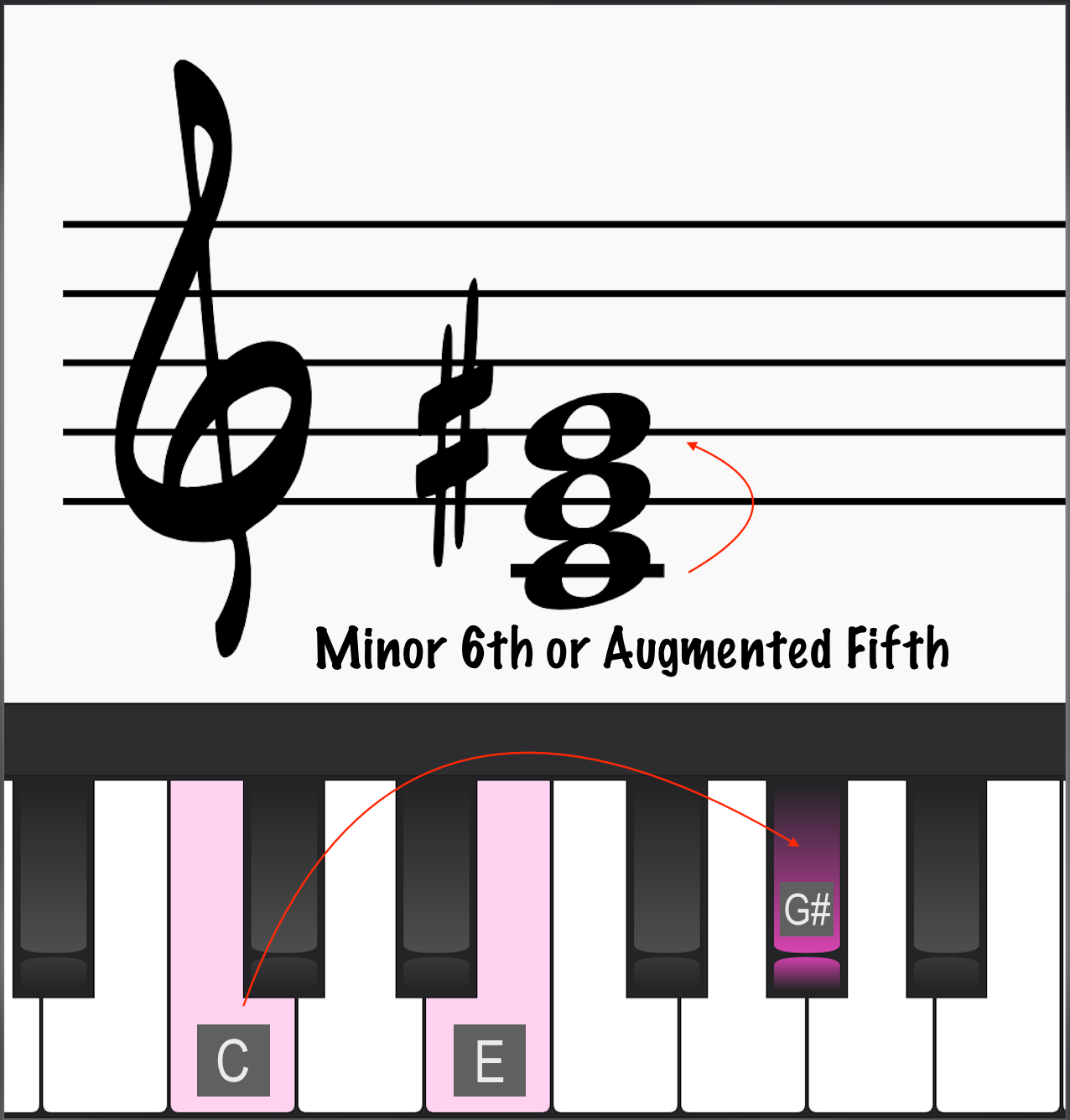
Major Sixth (M6):
A major sixth interval is made of nine half steps and is one of the imperfect intervals.
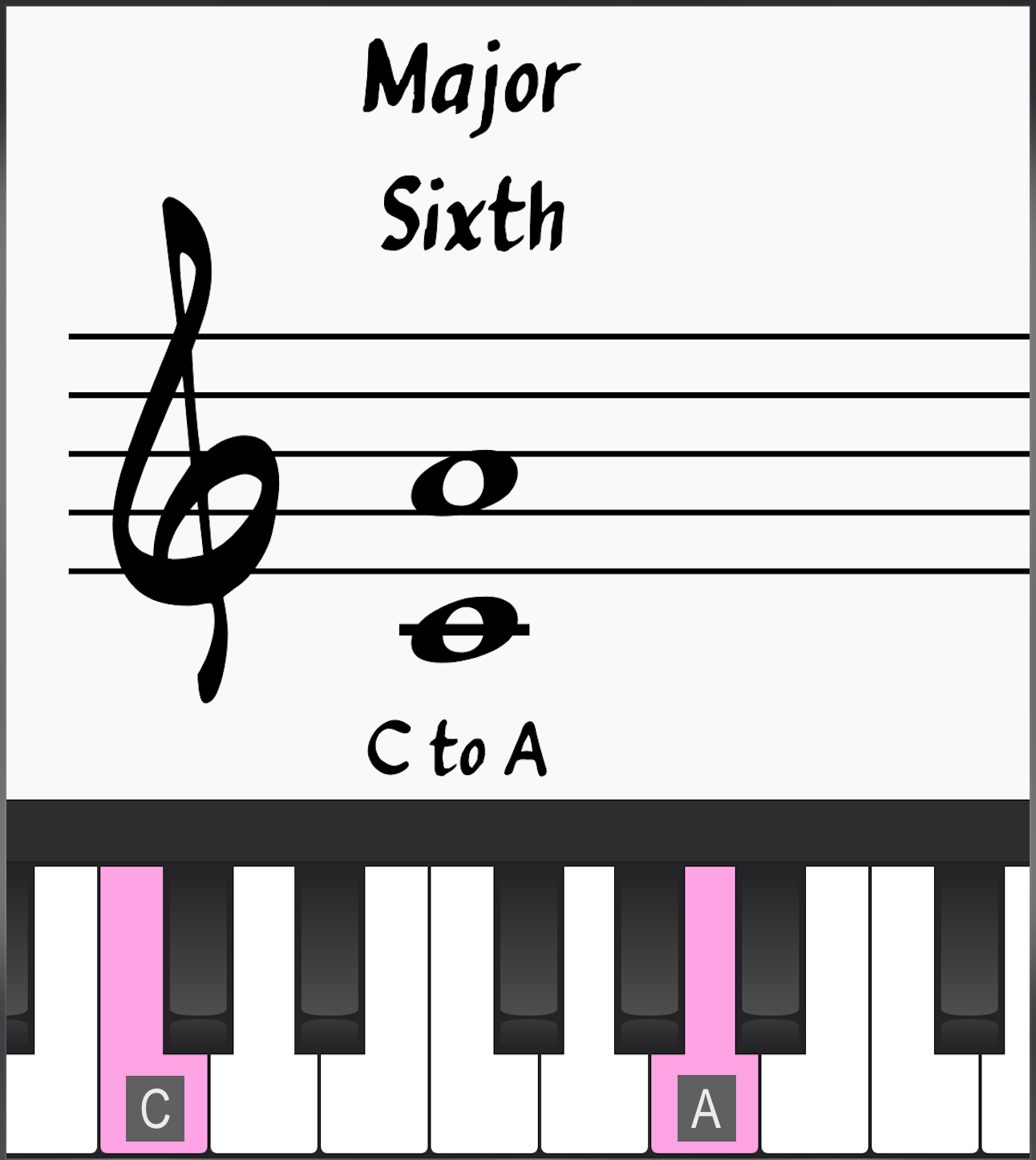
Minor Seventh (m7):
A minor seventh is made of ten half steps and is one of the imperfect intervals.
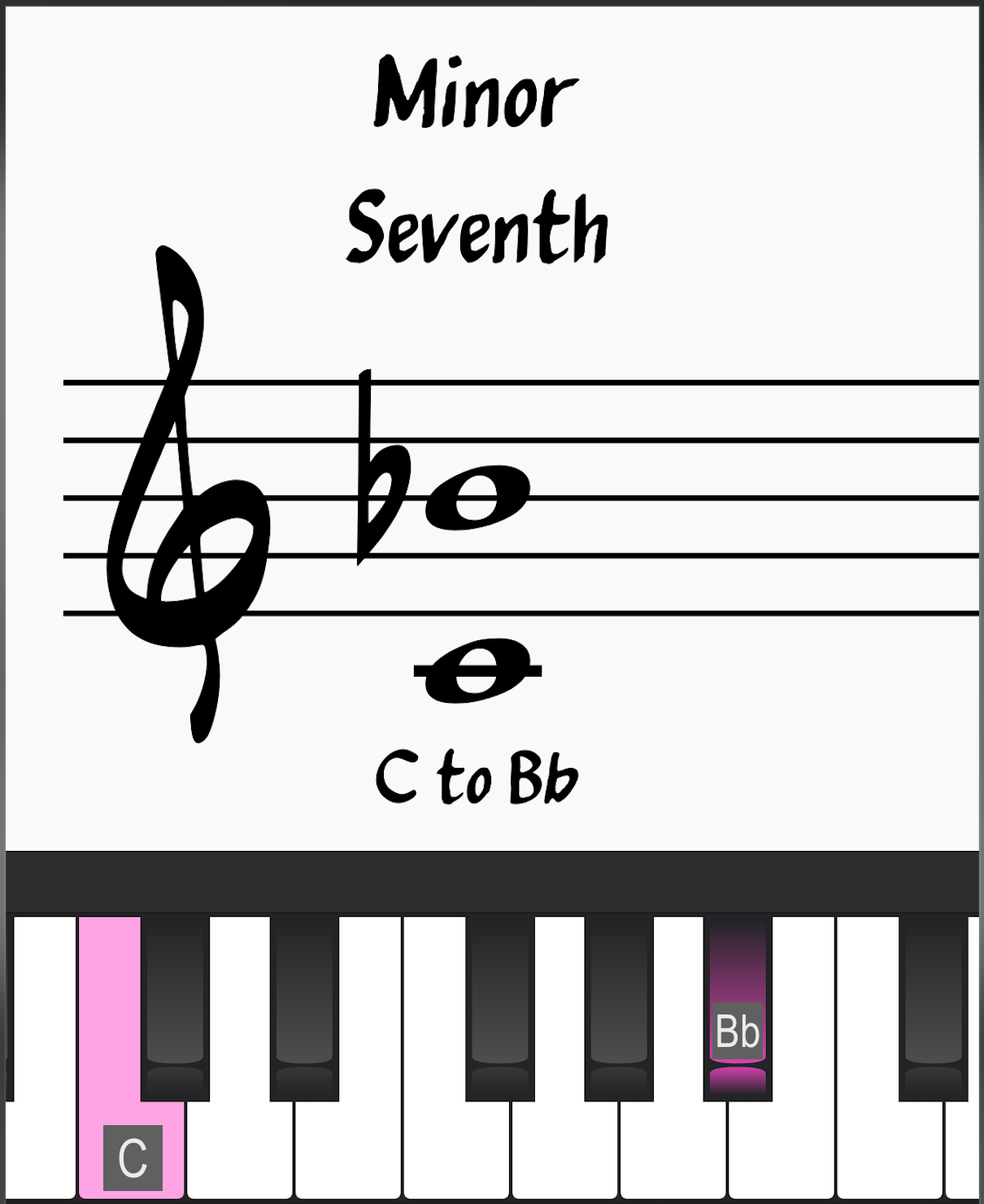
Major Seventh (M7):
A major seventh is eleven half steps and is an imperfect interval. Though it is the largest of simple intervals, it isn’t considered a consonant interval because it is a half step away from the octave. Because of this, major sevenths have that “rub” like other dissonant intervals.
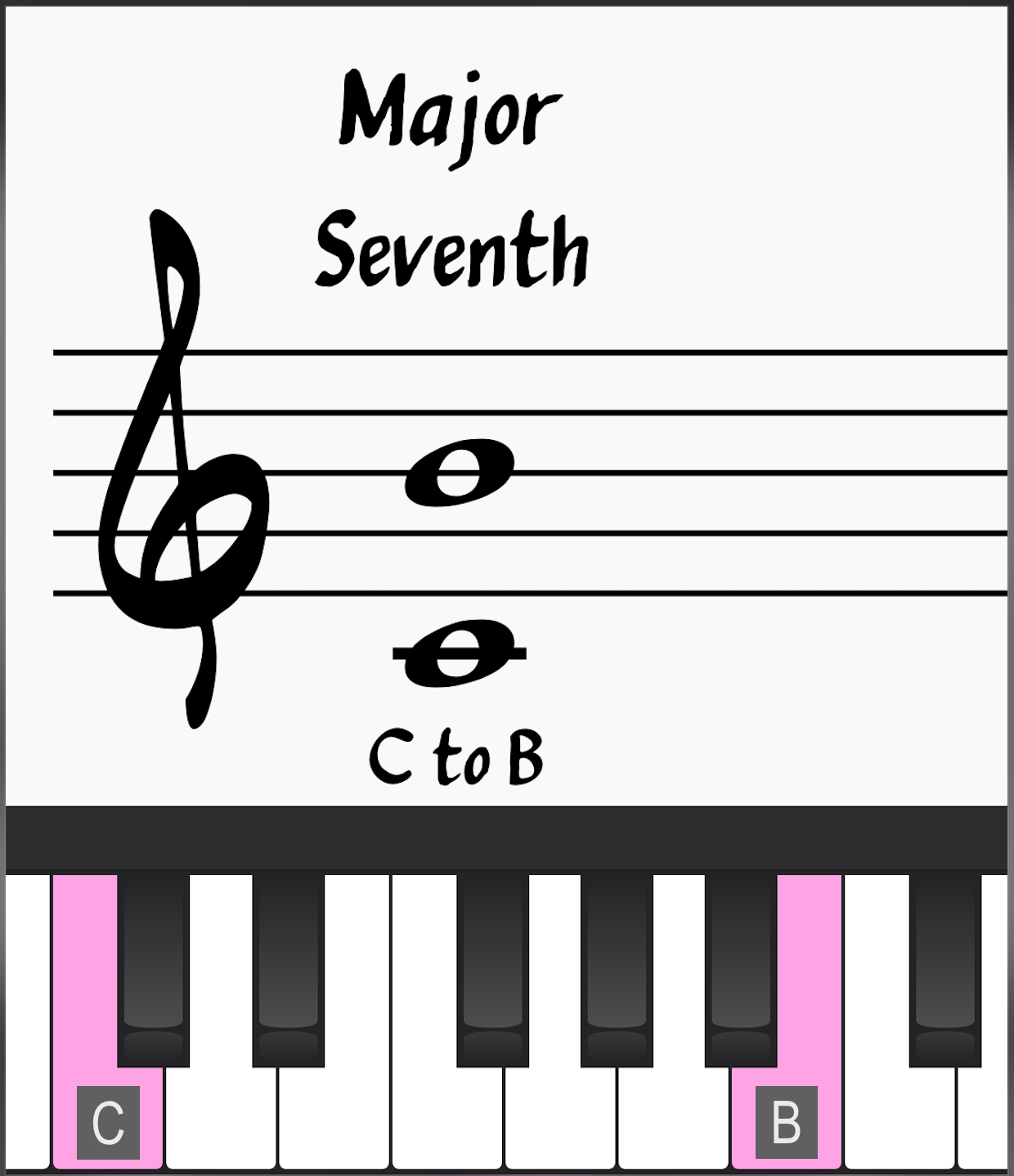
Octave:
Finally, we have the octave, the last of the perfect intervals. It consists of twelve half steps.
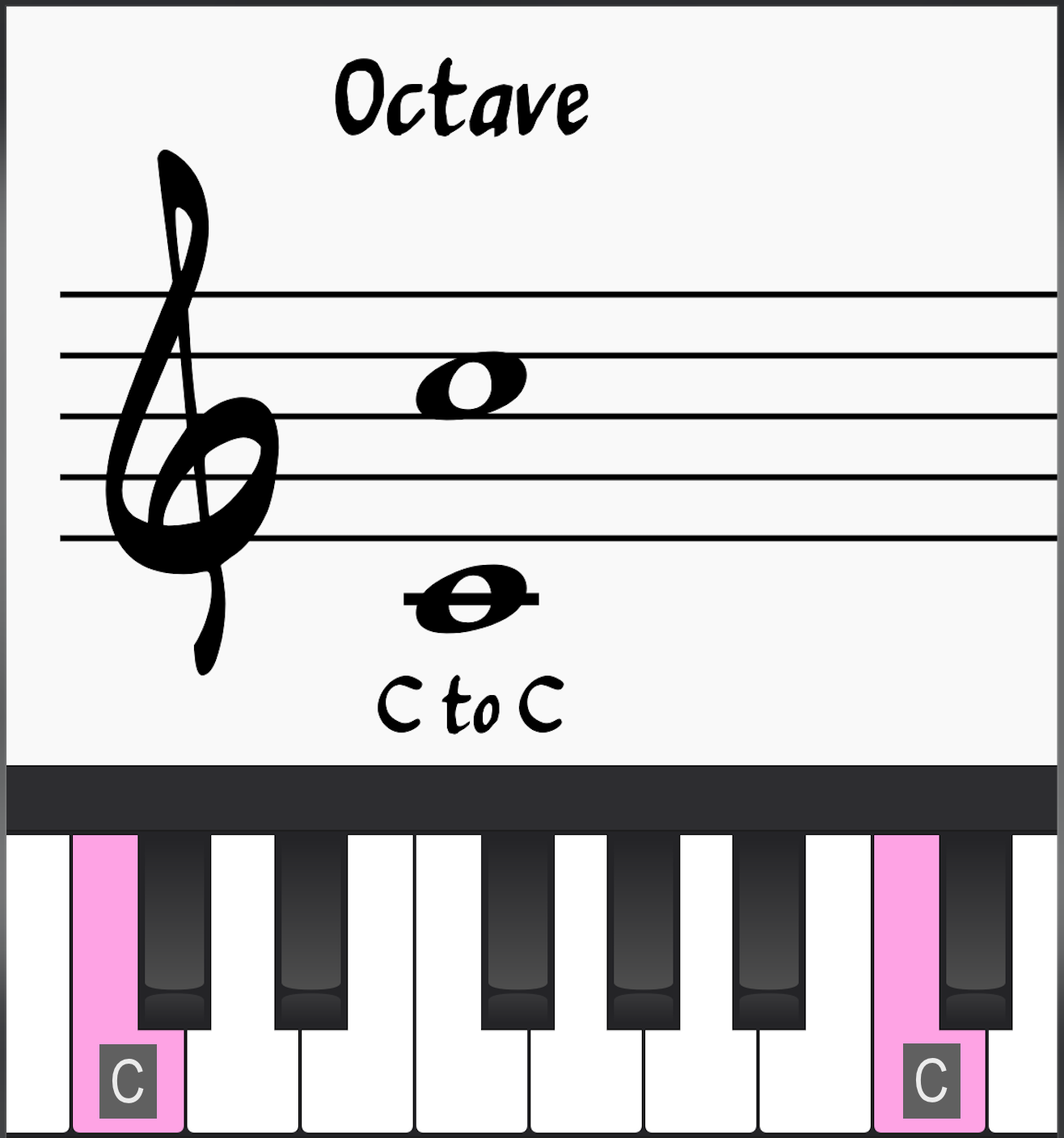
Understanding these music intervals lays the foundation for comprehending melodies, harmonies, and chord progressions.
If you want to learn how to practice hearing music interval qualities, check out our article on ear training fundamentals, which goes over best practices for interval ear training.
Building Scales Using Music Intervals
Now that we know simple intervals, let’s explore how they are used to form scales.
Scales are sequences of pitches arranged in ascending or descending order, often used as the basis for melodies, harmonies, and improvisation. There are many different types of scales:
- Pentatonic Scales
- Diatonic Scales
- Hexatonic Scales
- Octatonic Scales
- Symmetrical Scales
- The Chromatic Scale
- Melodic Minor Scales
- Harmonic Minor Scales
One unifying factor is that each scale type spans the distance of an octave before repeating.
That means you can easily learn all these different scale types by learning to recognize all the melodic intervals within an octave. Relating scale degrees to interval numbers will help you hear how different scales are constructed.
Here are some common scales listed with their component intervals:
Major Scale
The most common scale in Western music is the major scale, which follows a specific pattern of intervals:

C major scale: C-D-E-F-G-A-B-C
- Root Note: C
- Major Second: D
- Major Third: E
- Perfect Fourth: F
- Perfect Fifth: G
- Major Sixth: A
- Major Seventh: B
- Octave: C
Natural Minor Scale
In contrast to the major scale, the minor scale has a different interval pattern, characterized by a minor third, sixth, and seventh:

Natural Minor Scale: A-B-C-D-E-F-G-A.
- Root Note: A
- Major Second: B
- Minor Third: C
- Perfect Fourth: D
- Perfect Fifth: E
- Minor Sixth: F
- Minor Seventh: G
- Octave: A
Whole Tone Scale:
The whole tone scale is a symmetrical six-note scale comprised of whole steps.

C Whole Tone Scale: C-D-E-F#-G#-Bb-C
- Root Note: C
- Major Second: D
- Major Third: E
- Tritone: F#
- Minor 6th (aug 5th): G#
- Minor 7th: Bb
- Root Note: C
Melodic Minor Scale (Jazz Minor)
The melodic minor scale is very similar to the major scale, except it has a minor third rather than a major third. It can also be seen as a natural minor scale with a major sixth and major seventh.

C Melodic Minor Scale: C-D-Eb-F-G-A-B-C
- Root Note: C
- Major Second: D
- Minor Third: Eb
- Perfect Fourth: F
- Perfect Fifth: G
- Major Sixth: A
- Major Seventh: B
Understanding these interval patterns will help you identify and play different scales, enriching your musical vocabulary and versatility!
Harmonizing with Chords: Stacking Music Intervals
Chords are groups of three or more notes played simultaneously, creating harmony. They are constructed by stacking harmonic intervals on top of each other. Let’s look at two types of chords:
- Triads (root, 3rd, 5th)
- Seventh chords (root, 3rd, 5th, 7th)
Triads
Triads are three-note chords built by stacking thirds on top of each other. There are four primary types of triads:
- Major Triad: Consists of a root note, major third, and perfect fifth. For more on major triads, check out our guide to major triads.
- Minor Triad: This type of triad is made from a root note, minor third, and perfect fifth. For more on minor triads, check out our guide to minor triads.
- Diminished Triad: This triad consists of a root note, minor third, and diminished fifth. For more information, check out our guide to diminished triads.
- Augmented Triad: Composed of a root note, major third, and augmented fifth.
Seventh Chords
Seventh chords extend beyond triads, incorporating four intervals, usually a seventh (M7 or m7) interval, on top of the triad. The most common seventh chords include:
- Major Seventh (Maj7): Root, major third, perfect fifth, major seventh.
- Minor Seventh (m7): Root, minor third, perfect fifth, minor seventh.
- Dominant Seventh (7): Root, major third, perfect fifth, minor seventh.
- Minor-Major Seventh (mMaj7): Root, minor third, perfect fifth, major seventh.
Check out our ultimate guide to seventh chords for more information.
By understanding how music intervals stack up to form chords, musicians can create rich harmonic textures, adding depth and emotion to their compositions and arrangements.
What’s Next? Compound Intervals
After mastering simple intervals, your next step should be tackling compound intervals, which are intervals beyond the octave. These music intervals are called compound intervals because you add the octave and the distance past it to name them.
Compound intervals retain the same quality (major, minor, perfect, etc.) as their simple counterparts within the octave but are altered by adding one or more octaves.
Let’s explore the compound intervals beyond the octave:
- Compound Unison: An octave plus a unison (or just an octave).
- Compound Octave: A perfect octave plus another octave.
- Compound Second: A ninth interval or a major or minor second plus an octave.
- Compound Third: A tenth interval or a major or minor third plus an octave.
- Compound Fourth: An eleventh interval or a perfect fourth plus an octave.
- Compound Tritone: A tritone interval plus an octave.
- Compound Fifth: A twelfth interval or a perfect fifth plus an octave.
- Compound Sixth: A thirteenth interval or a major or minor sixth plus an octave.
- Compound Seventh: A fourteenth interval or a major or minor seventh plus an octave.
Why are compound intervals important? Well, if you want to master jazz harmony, you’ll need to master chord extensions and alterations. In other words, you’ll need to master music intervals beyond the octave to master jazz harmony truly!
If you want to dig into chord extensions and alterations, check out this article on how to use chord extensions and alterations to spice up your improv.
Up Your Musicianship Game And Join the Learn Jazz Standards Inner Circle.
Does your practice routine need an upgrade? Many players hit a practice plateau and never learn how to break through and reach that next level. If you spend hours at a time shedding, but to no avail, then perhaps you need to change how you practice.
Believe it or not, you have to practice practicing. Practicing is a skill you can either ignore or focus on. Those who focus on it learn how to make measurable progress toward their musicianship goals through incremental successes.
We believe the best way to master jazz is by speaking the jazz language. We study jazz standards and the vocabulary of the jazz greats to help us develop our own unique jazz vocabulary.
Inner circle members have access to over ten years of jazz education resources, including instrument-specific and agnostic courses, masterclasses, workshops, and jazz standard deep dives, with a new deep dive added each month.
Plus, we’re a vibrant and committed community that holds each other accountable for those incremental successes.
Practice smarter. Not harder. Join the Inner Circle.



